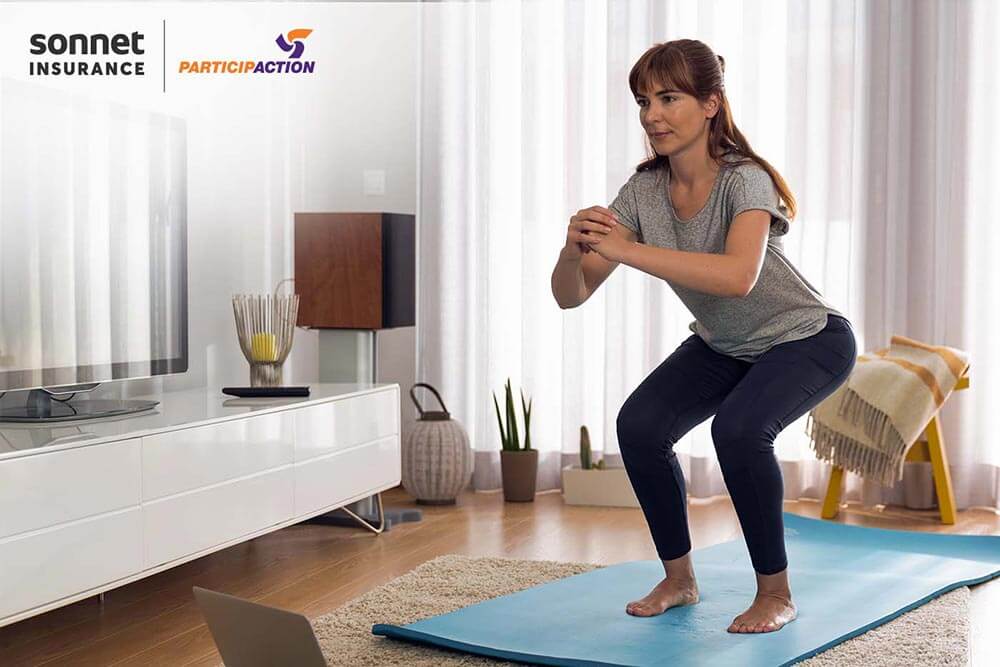
This article is part of a series in collaboration with
Your job may require you to be sedentary for much of the day, but that doesn’t mean your workday needs to be that way. Sedentary lifestyles are linked to a
The
Here are five ways you can do that:
1. Take that meeting, walking. Meetings or business calls don’t always need to be done from a stationary position. Use your mobile device to free you from your desk and take your meeting or conference call on the go. Alternatively, you could suggest turning a virtual or in-person meeting with a colleague into a walking or wheeling one.
2. Stop eating lunch at your desk. Having time to get moving in the day is about making pockets of time to do it. While it’s tempting to forgo a lunch break and simply work and munch through it, do yourself a favour and use the time to take a short, brisk walk or bike ride. Even breaking up the lunch hour or half-hour into 15 minutes of walking and 15 minutes of eating will improve your mood – and digestion.
3. Break up extended periods of sedentary behaviour. If you want to spend less time being sedentary, consider getting an adjustable or stand-up desk that lets you alternate between periods of sitting or standing throughout your day. Alternatively, just taking some time to stretch or move away from your desk for a few minutes can also do the trick.
You could also consider swapping out your office chair for a stability ball to engage and challenge the core muscles as you tackle your inbox each day. Even having a stability ball on hand means you can switch back and forth between it and your chair throughout the day.
4. Schedule activity breaks. If you live by your work calendar, then be sure to add in two 10- to 15-minute movement breaks into your work schedule. Choose movements that will relieve the strain of sitting. Windmill your arms, rotate your wrists and ankles, or stretch your upper back, for example. Wake up your lower body by taking a walk or wheel around your workspace, looking for opportunities to challenge yourself by adding in some stairs or inclined surfaces, like a ramp.
5. Use your desk or chair as equipment. You don’t need to leave your workspace to engage your muscles. There are many body weight exercises you can do at your desk or using your chair to get your heart rate up. These short breaks make a difference. Adults are encouraged to do
Here are a few exercises you can do using your desk as a prop:
· Incline push-ups – Stand a few feet from your desk or chair with your feet together (make sure the chair is stable). Place your palms on the edge of your desk, shoulder-width apart. Lower down to the edge of the desk while maintaining a straight back, then push back to the starting position.
Modification: isometric chest squeeze. While in a tall posture, extend both arms out in front of you, bending them at a 90-degree angle. Press your palms together with your fingers pointing forward, then squeeze with force, holding for 15-30 seconds.
· Squat-to-toe heel raises – Stand in front of your desk or chair with your feet hip-distance apart and toes pointing forward. Keep your knees in line with your toes as you bend your knees to slowly lower your buttocks towards your heels, squatting as deeply as possible. To come to a stand, press up evenly through your feet to return to the starting position. Then, at the top, using your desk or the back of your chair for support, lift your weight up to your toes, contracting your rear leg muscles.
· Heel lifted sumo squats – Begin with your feet slightly wider than shoulder-width apart, toes pointed outward. Holding the edge of your desk, lift one heel. With control, sit your hips back as far as possible toward the floor, keeping your knees behind your toes and bracing your core. Press into your opposite heel to stand up into the starting position. Raise your opposite heel and repeat.
Modification: Seated heel raises. Sit on a chair with your feet in front of you, hip-width apart. Slowly raise your heels off the floor, lifting them as high as you can while keeping your instep over your toes. Contract your calf muscles at the top of the movement. Hold for a beat. Slowly lower your heels to the starting position.
· Shoulder retraction – Stand or sit with your arms extended down and out at your sides. Turn your hand out (palms facing out). Focusing on the area between your shoulder blades, gently pull your shoulders back and down as you reach your arms back slightly. Hold at the top of the movement, then slowly release.
· Inclined mountain climbers – Place your hands slightly wider than shoulder-width apart on the edge of your desk or counter, arms straight. Bring your body into a plank position, keeping your back straight and core tight. Bring one knee in towards your chest then switch feet and draw the other knee in, alternating back and forth quickly as if you’re running.
Set yourself an active workday challenge and perform all of the above exercises in a circuit. Aim to do each exercise for one minute each before moving on to the next one. Challenge yourself and go through the whole circuit twice.
Sonnet and ParticipACTION have a commercial marketing partnership.